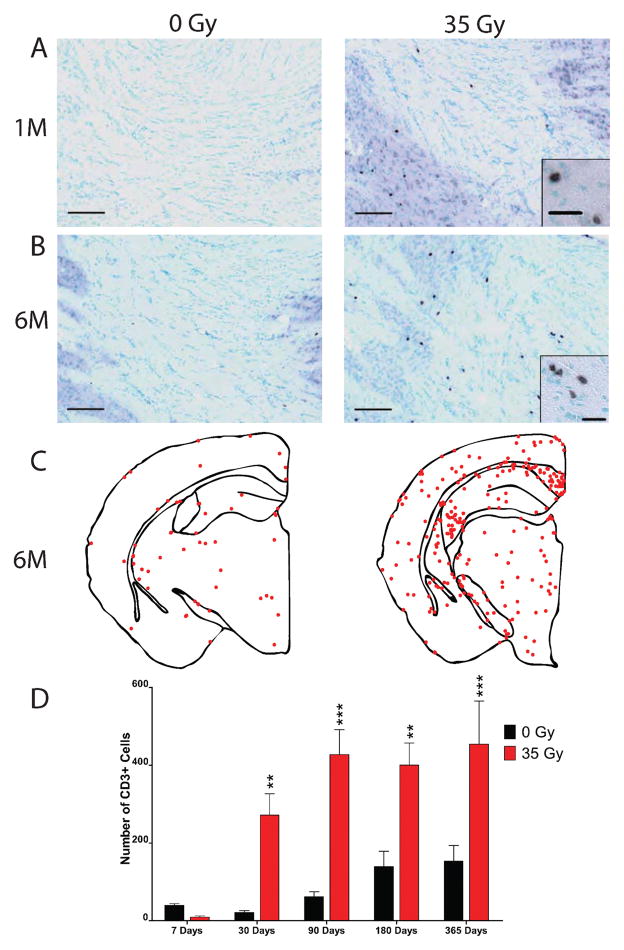FIG. 6.
Delayed increase in T-cell infiltration after cranial irradiation. Animals were cranially irradiated and euthanized at various times up to 1 year postirradiation. Sections from 0- and 35-Gy irradiated animals were immunohistochemically stained for CD3 and counterstained with methyl green (Vector) at 1 month (panel A) and at 6 months (panel B) postirradiation. Scale bars in panels A and B: 100 μm, insets, 20 μm. Representative dot plots demonstrating the distribution of CD3-positive cells in the brain were constructed for 0- and 35-Gy animals at 6 months (panel C). Each point represents one CD3-positive cell. The total number of cells from the first two sections of brain tissue containing both blades of the dentate gyrus was quantified in both 0- and 35-Gy irradiated animals, starting at 7 days (panel D). Data were analyzed with a two-way ANOVA and Bonferroni post-tests comparing 0- and 35-Gy mice for each time. Graph shows means ± SEM, n = 5–6 per condition for each time: *P < 0.05, **P < 0.01, and ***P < 0.001.

